Discover 35 hidden attractions, cool sights, and unusual things to do in Greensboro (United States). Don't miss out on these must-see attractions: International Civil Rights Center & Museum, Wet 'n Wild Emerald Pointe, and Greensboro Coliseum Complex. Also, be sure to include LeBauer Park in your itinerary.
Below, you can find the list of the most amazing places you should visit in Greensboro (North Carolina).
Table of Contents
International Civil Rights Center & Museum
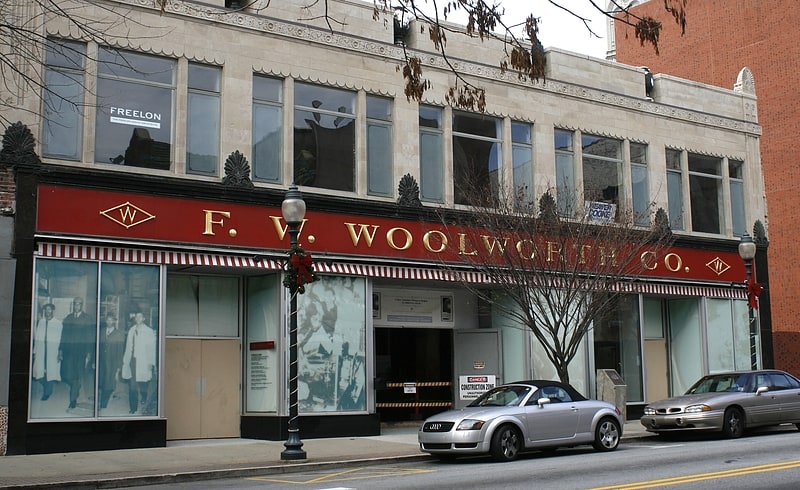
History museum in Greensboro, North Carolina. The International Civil Rights Center & Museum is located in Greensboro, North Carolina, United States. Its building formerly housed the Woolworth's, the site of a non-violent protest in the civil rights movement. Four students from North Carolina Agricultural and Technical State University started the Greensboro sit-ins at a "whites only" lunch counter on February 1, 1960. The four students were Franklin McCain, Joseph McNeil, Ezell Blair Jr. and David Richmond. The next day there were twenty students. The aim of the museum's founders is to ensure that history remembers the actions of the A&T Four, those who joined them in the daily Woolworth's sit-ins, and others around the country who took part in sit-ins and in the civil rights movement. The Museum is currently supported by earned admissions and Museum Store revenues. The project also receives donations from private donors as a means of continuing its operations. The museum was founded in 1993 and officially opened its doors fifty years to the day after the sit-in movements in Greensboro NC.[1]
Address: 134 S Elm St, 27401 Greensboro
Wet 'n Wild Emerald Pointe

Water park. Wet 'n Wild Emerald Pointe is a water park located in Greensboro, North Carolina, United States, and is part of the Wet 'n Wild chain of water parks. There are 15 slides, 5 pools, and 2 children areas. The Themed Entertainment Association has ranked the park 20th in North America in terms of attendance, of which they had 407,000 visitors as of 2015. Major regional competitors are Carowinds' Carolina Harbor in Charlotte, North Carolina and Dollywood's Splash Waterpark in Pigeon Forge, Tennessee.[2]
Address: 3910 S Holden Rd, 27406-9503 Greensboro
Greensboro Coliseum Complex

Sports complex in Greensboro, North Carolina. The Greensboro Coliseum Complex is an entertainment and sports complex located in Greensboro, North Carolina. Opened in 1959, the arena is the largest indoor arena in the United States, with a seating capacity of over 23,500. The complex holds eight venues that includes an amphitheater, arena, aquatic center, banquet hall, convention center, museum, theatre, and an indoor pavilion. It is the home of the UNC Greensboro Spartans men's basketball team, the Greensboro Swarm of the NBA G League, the Carolina Cobras of the National Arena League, as well as the Atlantic Coast Conference with their Men's and Women's basketball tournaments.
It has hosted the Men's ACC Tournament twenty-three times since 1967 and the Women's ACC Tournament twelve times since 2000. Other notable sporting events include the National Collegiate Athletic Association (NCAA) Men's "Final Four" in 1974 and the East Regionals in 1976, 1979 and 1998. More recently, the Coliseum has hosted the U.S. Figure Skating Championships in 2011, 2015, and 2020.
It is also the former home of several professional hockey teams including the Greensboro Generals, Greensboro Monarchs of the East Coast Hockey League (ECHL) and the National Hockey League's Carolina Hurricanes.
The complex has hosted the "Central Carolina Fair" since 1999.[3]
Address: Greensboro, 1921 West Gate City Boulevard
LeBauer Park

Carolyn & Maurice LeBauer Park, also known as LeBauer City Park, is a 4-acre $10 million park in downtown Greensboro, North Carolina which opened August 8, 2016.
Dr. Maurice LeBauer, who practiced medicine in the Jefferson Standard Building and became chief of surgery at Moses H. Cone Memorial Hospital, was the son of Joe LeBauer, who moved his silk hosiery operation to Greensboro in 1920. He was married to Carolyn Weill LeBauer and died in 1996.
In November 2012, the Community Foundation of Greater Greensboro announced a $10 million gift from the will of Carolyn LeBauer who wanted a new park in the city. On November 28, foundation president Walker Sanders announced a plan for Carolyn and Maurice LeBauer City Park as part of the performing arts center. It would be located on Summit Avenue between North Elm and North Davie Streets; Summit Avenue would be rerouted and would become Bellemeade Street. The site was the location of Festival Park, and a YMCA had once stood there. A steering committee started work in August 2013, and project coordinator Merrill McCarty said the 2.5-acre park, to be located on North Davie Street, would be "an anchor for the cultural campus", including the Greensboro Cultural Center, the Greensboro Historical Museum, and the Greensboro Public Library. McCarty said Carolyn LeBauer was "very specific about" including gardens.
A groundbreaking was held November 19, 2014. The previous day, designer Nathan Elliott of The Office of James Burnett of Solana Beach, California showed what the park would look like. It included a playground, fountains, and a dog park. The Price/Bryan stage was to be moved next to the Greensboro Historical Museum, and a 17,000-square-foot lawn would be used for events or movies related to the performing arts center.
A ribbon cutting on August 8, 2016 included a ceremony in Carolyn's Garden.
Greensboro Downtown Parks Inc. started by the Community Foundation, the City of Greensboro and Action Greensboro, manages LeBauer Park and Center City Park. The city owns both parks.
The Janet Echelman sculpture Where We Met, called "the largest outdoor art installation in the Southeast", was built with a $1 million grant from the Edward M. Armfield Sr. Foundation, is described as a "net of blue, red, yellow and orange, measuring 200 by 130 feet and suspended over the park’s Great Lawn." The structural layer includes 2800 feet of rope and is constructed of ultra-high-molecular-weight polyethylene (UHMWPE), which is stronger than steel. The sculptural layer is polytetrafluoroethylene with 35 miles of fiber and 242,800 knots. The design is inspired by the city's textile industry, particularly denim.[4]
Address: 200 N Davie St, 27401-2819 Greensboro
Greensboro Historical Museum
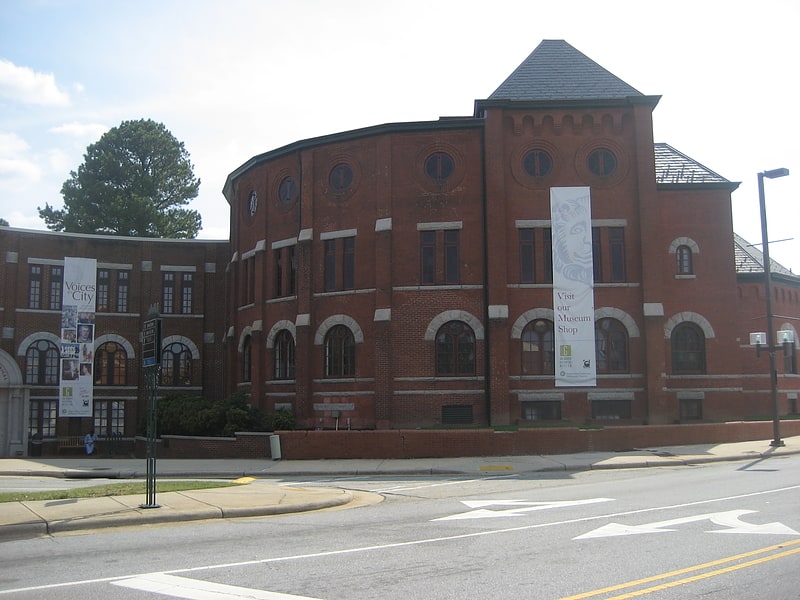
Museum in Greensboro, North Carolina. The Greensboro History Museum, consisting of the former First Presbyterian Church of Greensboro and Smith Memorial Building, is a historic museum building located at 130 Summit Ave. in Greensboro, Guilford County, North Carolina. The former Presbyterian church was built in 1892 on the site of a former Confederate hospital, and is a Romanesque Revival style brick building with a cross gable roof and tower. The semi-circular, 11 bay, Smith Memorial Building was built in 1903. It features four octagonal sides and a tower. The memorial building was designed by the architect Charles Christian Hook. The church and memorial building were connected and the older structures modified and renovated in 1938. Also located on the property is the First Presbyterian Church cemetery, established in 1831, after the first church was built on land that was donated by Jesse H. Lindsay. The church vacated the property in 1929, and in 1937-1938 it was renovated and enlarged as the Richardson Civic Center and donated to the city of Greensboro. It subsequently housed the Greensboro Public Library, the Greensboro Historical Museum, and the Greensboro Art Center. The historic building functions as one part of the current, larger Greenboro History Museum.
It was listed on the National Register of Historic Places in 1985.[5]
Address: 130 Summit Ave, 27401-3004 Greensboro
Guilford Courthouse National Military Park
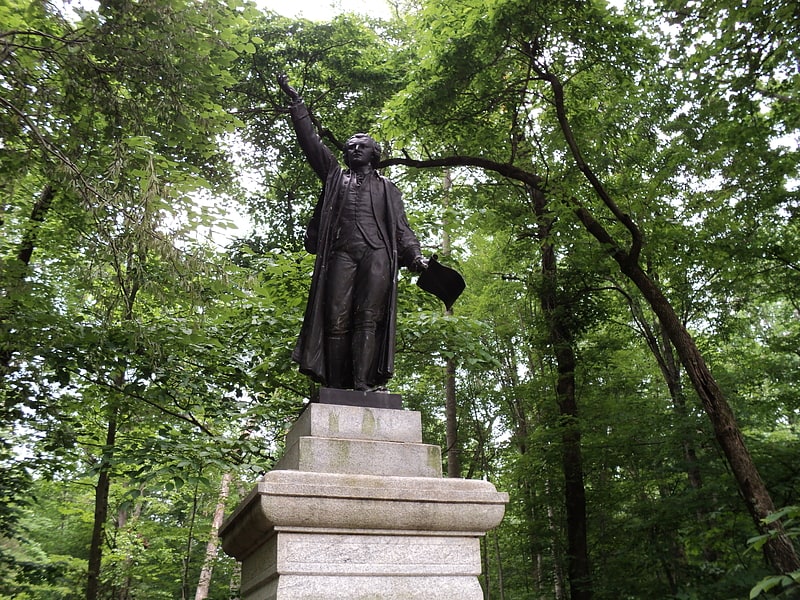
National park in Greensboro, North Carolina. Guilford Courthouse National Military Park, at 2332 New Garden Road in Greensboro, Guilford County, North Carolina, commemorates the Battle of Guilford Court House, fought on March 15, 1781. This battle opened the campaign that led to American victory in the Revolutionary War. The loss by the British in this battle contributed to their surrender at Yorktown seven months later. The battlefield is preserved as a National Military Park and operated by the National Park Service. Based on research of historical evidence, the interpretation of the battle has changed since the late 20th century, which will affect the placement of monuments and markers.[6]
Address: 2332 New Garden Rd, 27410-2355 Greensboro
Blandwood

Museum in Greensboro, North Carolina. Blandwood Mansion is a historic house museum at 447 West Washington Street in Greensboro, North Carolina. Originally built as a four-room Federal style farmhouse in 1795, it was home to two-term North Carolina governor John Motley Morehead under whose ownership it was transformed into its present appearance. It is believed to be the oldest extant example of the Italian Villa Style of architecture in the United States, and was designated a National Historic Landmark in 1988. In creating the design for Blandwood, architect Alexander Jackson Davis produced a popular prototype for American house designs in the Italianate style: a central tower projecting from the main facade. Saved from demolition in 1964 by preservation-minded Greensboro citizens, the house was opened as a museum in 1976 and remains open to the public today.[7]
Address: 447 W Washington St, 27401-2348 Greensboro
Weatherspoon Art Museum
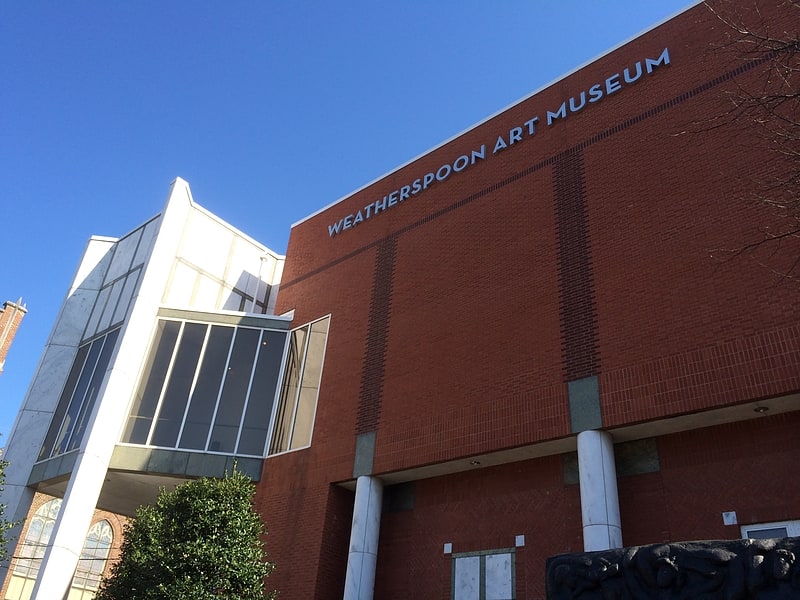
Museum in Greensboro, North Carolina. The Weatherspoon Art Museum is located at the University of North Carolina at Greensboro and is one of the largest collections of modern and contemporary art in the southeast with a focus on American art. Its programming includes fifteen or more exhibitions per year, year-round educational activities, and scholarly publications. The Weatherspoon Art Museum was accredited by the American Alliance of Museums in 1995 and earned reaccreditation status in 2005.[8]
Address: Corner of Spring Garden and Tate STS, 27412-0001 Greensboro
Greensboro Science Center
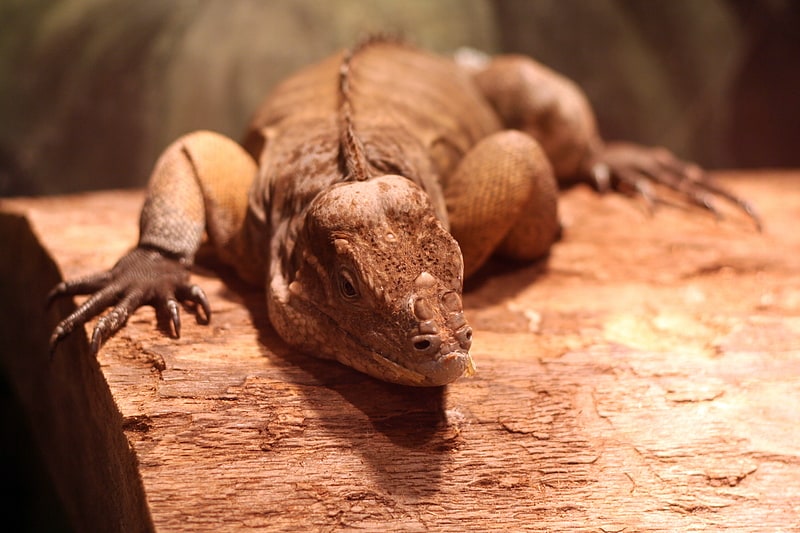
Museum in Greensboro, North Carolina. The Greensboro Science Center is a science museum and zoological park established in 1957 and located in Greensboro, North Carolina, United States. It has been accredited by the Association of Zoos and Aquariums since 2008, and is a member of the American Alliance of Museums.[9]
Address: 4301 Lawndale Dr, 27455 Greensboro
Carolina Theatre
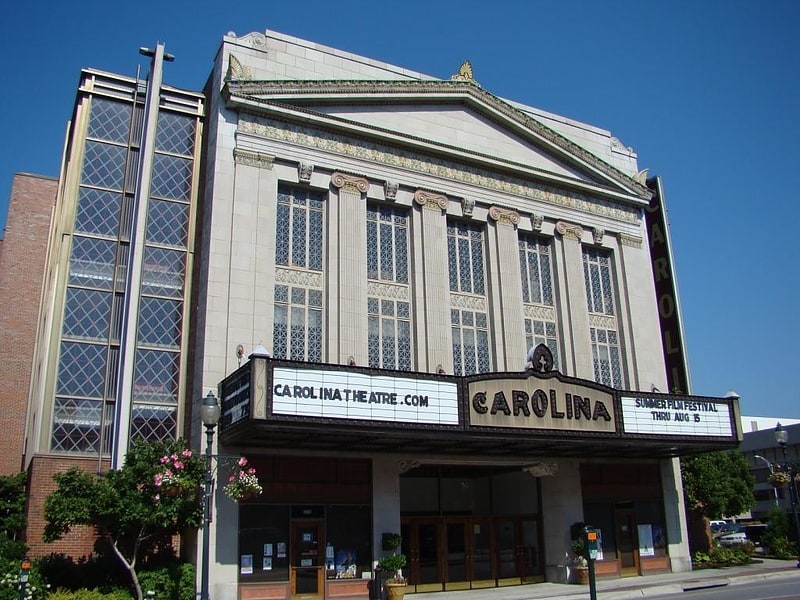
Theatre in Greensboro, North Carolina. The Carolina Theatre of Greensboro is Greensboro, North Carolina's only remaining historic theatre. It was billed as “The Showplace of the Carolinas” when it opened on Halloween night, 1927. The 2,200 seat structure was built for the Saenger-Publix Company, cost over $500,000 to build and was one of the first commercial buildings to be air conditioned in the state.
Early programs featured live performances, the Carolina Theatre Orchestra, the Carolina News newsreel, audience sing-alongs and silent films accompanied on the Robert Morton theatre organ. Saenger installed a Vitaphone sound system in 1928. The first "talkies" attracted sellout crowds. The first movie with sound shown at the Carolina was Glorious Betsy starring Conrad Nagle in 1928. The Jazz Singer was shown next.
When constructed, the auditorium had a segregated balcony plus a mezzanine. Black patrons entered by a separate stairway and could only sit in the balcony. As late as May, 1963, the theatre was segregated. On May 15, 1963, students from North Carolina A&T University and Bennett College blocked the theatre's entrance when they were refused entrance.
By the early 1970s, the theatre had declined and was slated for demolition by its owner, Jefferson Pilot Corporation, now Lincoln National Corporation. The United Arts Council of Greensboro raised $550,000 to purchase the building from Jefferson Pilot at a bargain price. The United Arts Council refurbished the Theatre before reopening it as a community arts performing arts center in 1978.
In 1981, a mentally disturbed woman burned down the theatre and necessitated a second refurbishment. The balcony was closed and later new lighting and sound systems installed. In its present configuration, the theatre seats 1,075.
Today, the Carolina Theatre is owned and operated by Carolina Theatre of Greensboro, Incorporated – a 501(c)3 nonprofit corporation. Brian Gray is currently Managing Director of the corporation.
The theatre is home to the Greensboro Ballet. Community Theatre of Greensboro mounts its annual production of The Wizard of Oz every November at The Carolina.
With the exception of several public grants for restoration and maintenance, the Theatre operates on its own receipts and private contributions. Current programming includes classic and artistic movies, touring performers and companies, local theatre and dance productions, and other nonprofit and corporate uses.
CTOG, Inc. is a member of the League of Historic American Theatres and North Carolina Presenters Consortium.
A renovation campaign to raise $2.5 million was announced September 14, 2017, with renovations complete in October 2018.[10]
Address: Greensboro, 310 South Greene Street
West Market Street United Methodist Church
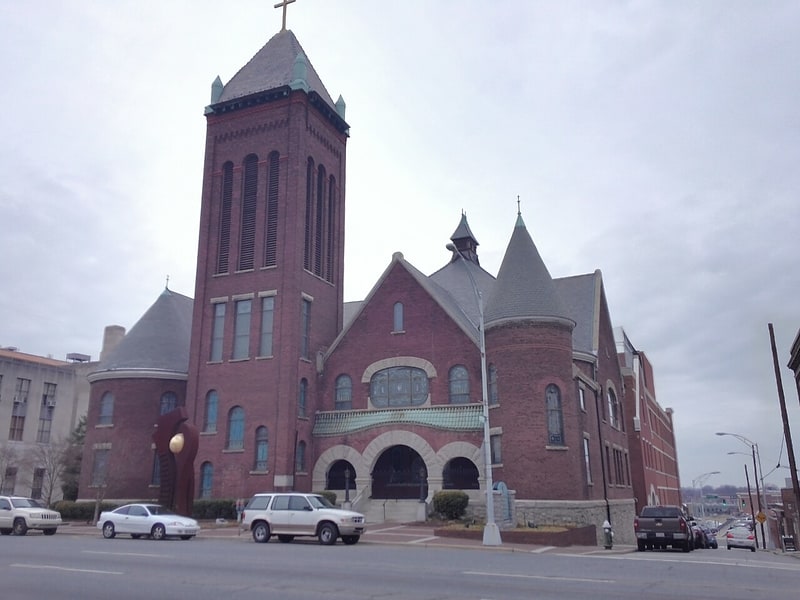
United methodist church in Greensboro, North Carolina. West Market Street United Methodist Church is one of the oldest churches in Greensboro North Carolina, over 175 years old; West Market is located in downtown Greensboro across from the courthouse. West Market is a relatively large church with approximately 2000 members, though not all are active. The current sanctuary was completed in 1893, the third sanctuary built by the congregation. Today the church has grown, with a larger wing adjacent to the sanctuary, and other properties held at other locations. The current Pastor is Dan Martin, with associate pastors Jill Aventosa-Brown, Rhiannon Kelly, Ginger Shields, Erin Althaus, and Bill Ellison.[11]
Address: 302 W Market St, 27401-6132 Greensboro
Triad Stage
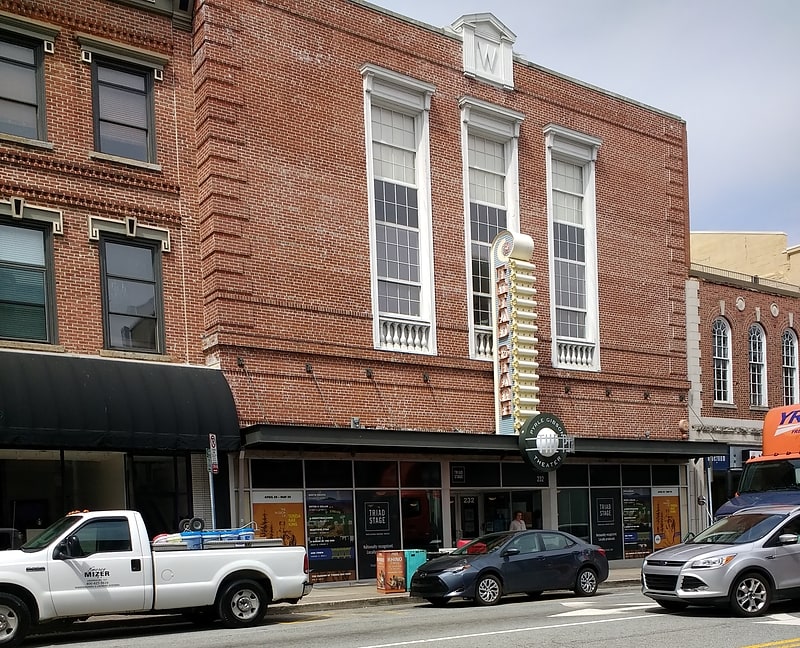
Theatre in Greensboro, North Carolina. Triad Stage is a regional theatre located at 232 South Elm Street, Greensboro, North Carolina.[12]
Address: Greensboro, 232 South Elm Street
February One
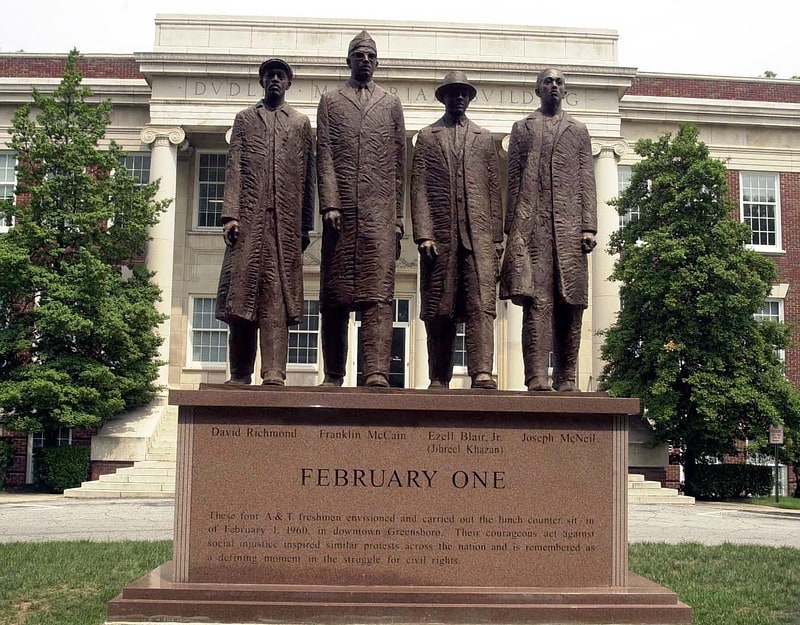
Sculpture by James Barnhill. February One is the name of the 2002 monument dedicated to Ezell Blair Jr. Franklin McCain, Joseph McNeil and David Richmond who were collectively known as the Greensboro Four. The 15-foot bronze and marble monument is located on the western edge of the campus of North Carolina Agricultural and Technical State University in Greensboro, North Carolina. James Barnhill, the sculptor who created the monument, was inspired by the historic 1960 image of the four college aged men leaving the downtown Greensboro Woolworth store after holding a sit-in protest of the company's policy of segregating its lunch counters. The sit-in protests were a significant event in the Civil Rights Movement due to increasing national sentiment of the fight for the civil rights of African-Americans during this period in American history.[13]
The Bog Garden
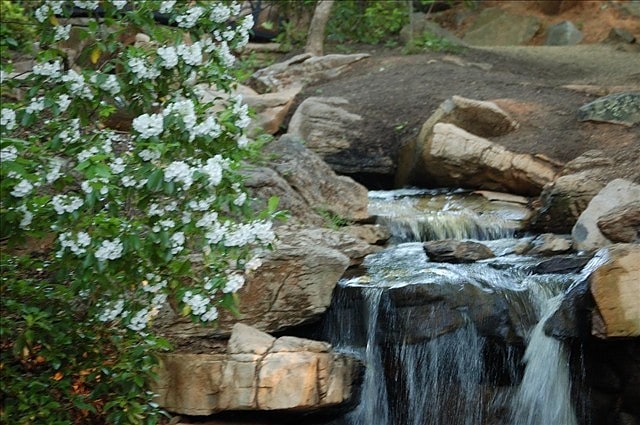
Botanical garden in Greensboro, North Carolina. The Bog Garden is a nature preserve, botanical garden, and city park located at 1101 Hobbs Road, Greensboro, North Carolina. It is open daily; admission is free.
Originally part of Starmount Farms, the land that comprises the park was donated to the City of Greensboro Parks and Recreation department by the Starmount Company in 1987. A local primary care physician, Dr. Joe Christian, took interest in the area and worked with city staff, volunteers, and local nurseries to plan and rehabilitate the park into an example of a wetland environment using plants native to the area. In 2005, a 150-foot man-made waterfall was installed in the park, and dedicated in "Dr. Joe's" memory in 2007.
The garden features a bog and lake that may be viewed from a half-mile long elevated boardwalk. Its plants include indigenous vegetation, with individually labeled trees, shrubs, ferns, and bamboo, as well as wildflowers and wild roses. The site is also a haven for native and migratory birds.[14]
Address: 1101 Hobbs Rd, 27410-4819 Greensboro
Our Lady of Grace Catholic Church
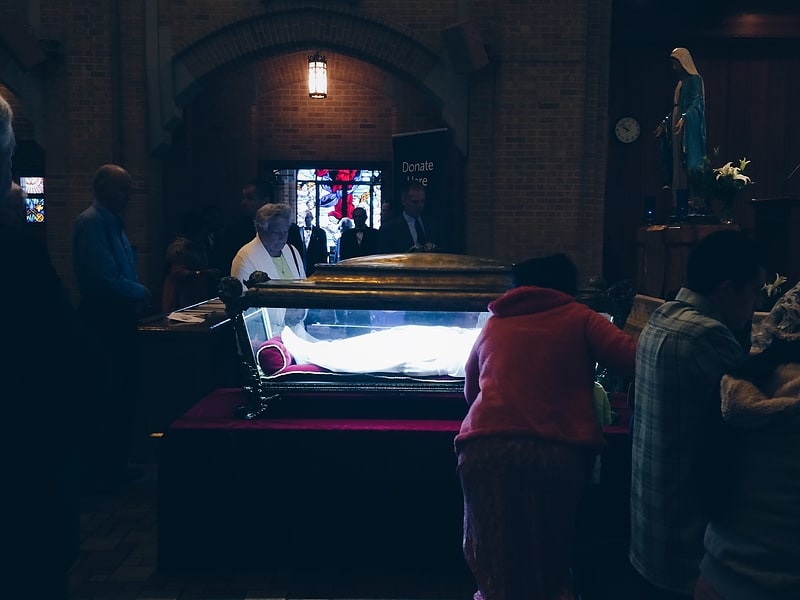
Catholic church in Greensboro, North Carolina. Our Lady of Grace Catholic Church is a Roman Catholic church in the Sunset Hills neighborhood of Greensboro, North Carolina. The church was erected as a memorial to Ethel Clay Price, a Catholic whose husband donated funds to build the church. The Church was designed to resemble Our Lady of Refuge in Brooklyn, New York. The church is also host of Our Lady of Grace Catholic School, serving children from grades pre-k through 8.[15]
Greensboro Arboretum

Botanical garden in Greensboro, North Carolina. Greensboro Arboretum is an arboretum located in Lindley Park at 401 Ashland Drive, Greensboro, North Carolina. It is open to the public daily without charge.
The arboretum features landscaped grounds with labeled plant collections, annual and perennial flowers, an arbor, gazebo and a lighted fountain, including the following displays and collections:
- Butterfly Garden
- Conifer Collection
- Dwarf Conifer Collection (more than 80 species of small conifers)
- Groundcover Collection
- Holly Garden
- Hosta Collection (approximately 200 hostas)
- Hydrophytic Collection
- Rhododendron Garden (over 70 varieties)
- Rose Garden
- Shade Shrub Collection
- Small Tree Collection
- Sun Shrub Collection
- Vine Collection & Perennial Border
- Wildflower Trail
- Winter Garden Collection
- Woodland Trail
Address: 401 Ashland Dr, 27403-1369 Greensboro
Celebration Station Greensboro

Amusement, Game and entertainment center, Amusement park, Arcade, Theme park, Entertainment
Address: 4315 Big Tree Way, 27409-2734 Greensboro
Center City Park

Park, Relax in park
Address: 200 N Elm St, Greensboro
Elsewhere

Museum, Art museum, Art gallery
Address: 606 S Elm St, 27406-1328 Greensboro
Tanger Family Bicentennial Garden
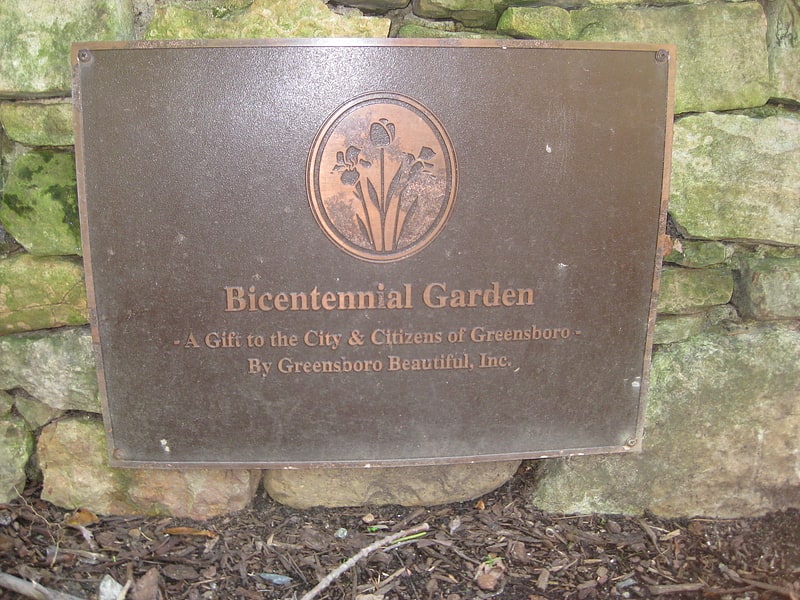
Park in Greensboro, North Carolina. The Tanger Family Bicentennial Garden is a historical garden and visitor center located in Greensboro, North Carolina. It was created in 1976 to recognize and honor the 200th anniversary of the United States. The garden features a man-made circulating stream, a wedding gazebo, and a variety of artistic and historical sculptures. Throughout, many different plants and shrubs decorate the landscape including annuals, perennials, flowering trees, and canopy trees. Greensboro Beautiful is a non-profit organization that raises funds for the garden, while the Greensboro Parks and Recreation Department oversees the events offered.[17]
Address: 1105 Hobbs Rd, 27410-4819 Greensboro
Greensboro Public Library
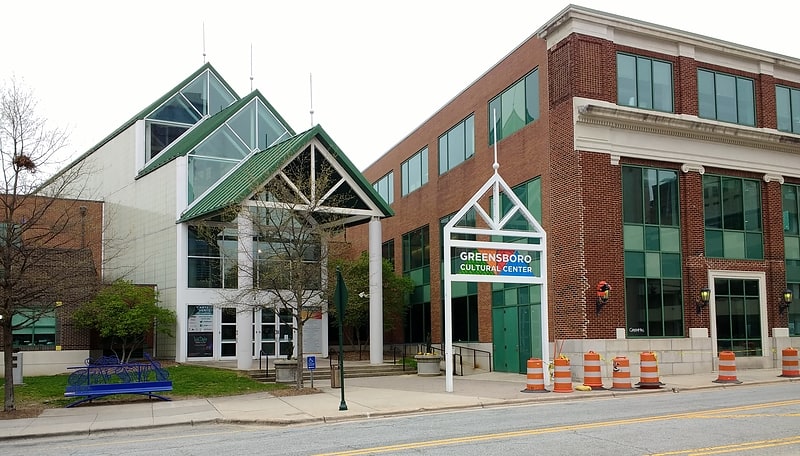
Cultural center in Greensboro, North Carolina. The Greensboro Cultural Center is a City of Greensboro Office of arts & culture facility, and is home to many arts-related programs in Greensboro, North Carolina.[18]
Address: 219 N Church St, 27401-2941 Greensboro
North Carolina Agricultural and Technical State University
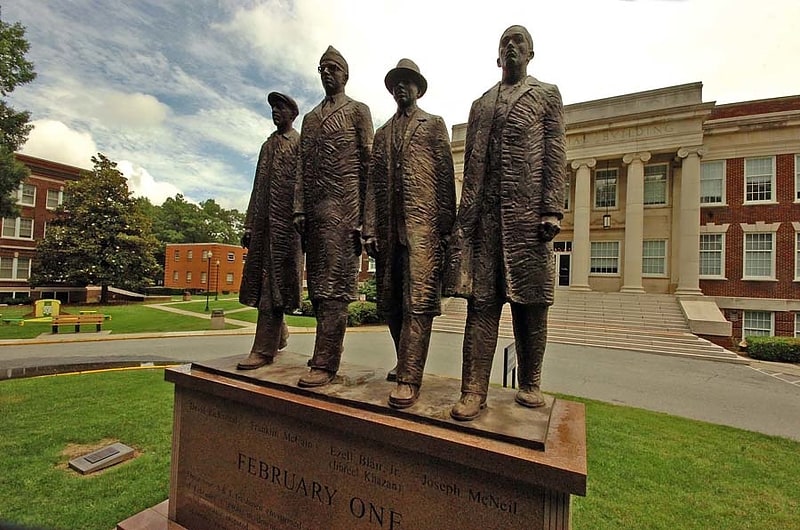
North Carolina Agricultural and Technical State University is a public, historically black land-grant research university in Greensboro, North Carolina. It is a constituent institution of the University of North Carolina System. Founded by the North Carolina General Assembly on March 9, 1891, as the Agricultural and Mechanical College for the Colored Race, it is the second college established under the provisions of the Morrill Act of 1890, and the first for people of color in the state of North Carolina. Initially, the college offered instruction in agriculture, English, horticulture, and mathematics. In 1967, the college was designated a Regional University by the North Carolina General Assembly and renamed North Carolina Agricultural and Technical State University.
With an enrollment of 13,322 students, North Carolina A&T is the largest historically black college or university (HBCU) in the U.S. a position it has held since 2014. The university's College of Engineering graduates more Black engineers than any other campus in the United States, and its College of Agricultural and Environmental Sciences produces more African American agriculture graduates than any campus in the country. The university is also a leading producer of African-American kinesiology undergraduates, landscape architects, nurses, teachers and journalism/mass communication grads.
The university offers 54 undergraduate, 29 master's, and nine doctoral degrees through its eight colleges, one school and one joint school; the university awards more than 2,600 degrees annually, and has an alumni base of around 65,000. The main campus encompasses over 600 acres (240 hectares) in area, additionally, the university operates a 492-acre (199 ha) working farm, and two research parks totaling a combined 150 acres (60 ha). The university is classified as a high activity research university by the Carnegie Classification of Institutions of Higher Education. The university ranks third in sponsored funding among University of North Carolina system institutions. As of 2021, the university conducts over $78 million in academic and scientific research annually, and operates 20 research centers and institutes on campus. The university's designation as a land grant institution reflects its broad range of research with ongoing projects funded by agencies such as the National Aeronautics and Space Administration (NASA), U.S. Department of Agriculture, U.S. Department of Defense, National Institutes of Health, and the National Science Foundation.
The school's students, alumni, and sports teams are known as "Aggies". The university's varsity athletic teams, are members of the Big South Conference all sports with the exception of Womens' bowling. As members of the Mid-Eastern Athletic Conference (MEAC), the football program earned 11 conference championships, made 5 NCAA FCS playoff appearances, and won the Celebration Bowl 4 times from 2015-19. The men's basketball program has reached the NCAA Tournament 10 times, while the women's basketball team has made the tournament 5 times, with their most recent appearance being in 2021. The Aggies' men's and women's track and field teams, placed third and fourth respectively, at the 2021 NCAA Division I Outdoor Track and Field Championships. Members of the team went on to represent the United States at the 2020 Olympics, where they captured 3 medals, 2 of them being gold.[19]
Address: 1601 E Market St, 27411-0002 Greensboro
Jefferson Standard Building
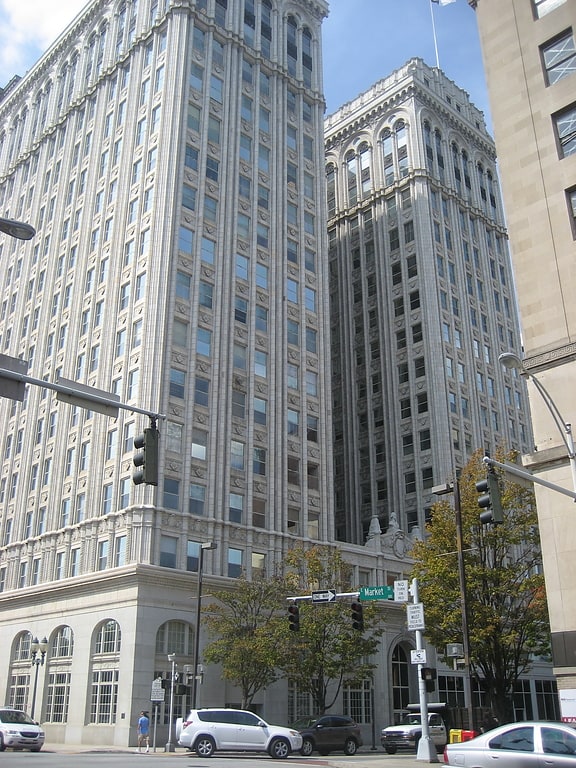
Building in Greensboro, North Carolina. The Jefferson Standard Building is a 374 ft skyscraper in Greensboro, North Carolina. It was completed in 1923 as the headquarters for Jefferson Standard Life Insurance Co. and has 18 floors. Until it was superseded by the Nissen Building in Winston-Salem in 1927, it was the tallest building in North Carolina and the tallest building between Washington, D.C. and Atlanta, Georgia. It was named to the National Register of Historic Places in 1976.
A 20-story addition first known as the Jefferson-Pilot Building and later the Lincoln Financial Building was finished in 1990.[20]
Address: North Elm Street, Greensboro
First Presbyterian Church of Greensboro

Church in Greensboro, North Carolina. First Presbyterian Church is a historic Presbyterian church located in the Fisher Park Historic District of Greensboro, North Carolina.[21]
Tabernacle Church

Cemetery. Tabernacle Methodist Protestant Church and Cemetery is a historic Methodist church building and cemetery and national historic district located at 5601 Liberty Road in Greensboro, Guilford County, North Carolina. The church was built in 1891, and is a one-story, frame building with a gable roof topped by a belfry. It features Gothic Revival style design elements. The associated cemetery was established about 1822. The parish is now known as Tabernacle United Methodist Church, with its new sanctuary being built in 1994.
It was listed on the National Register of Historic Places in 1995.[22]
Address: 5721 Methodist Rd, 27406 Greensboro
Holy Trinity Episcopal Church
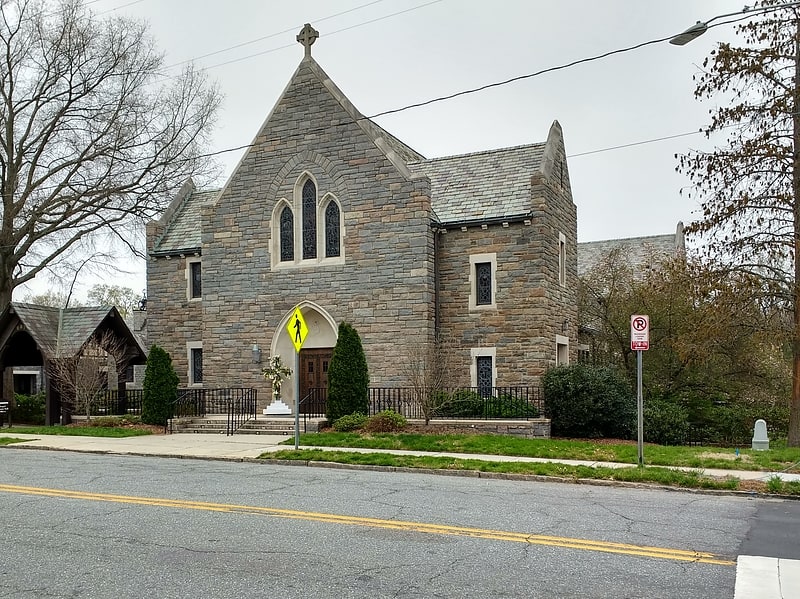
Episcopal church in Greensboro, North Carolina. Holy Trinity Episcopal Church is an Episcopal church in the Historic District of the Fisher Park neighborhood of Greensboro, North Carolina.[23]
Address: 607 N Greene St, 27401-2023 Greensboro
Fisher Park Historic District
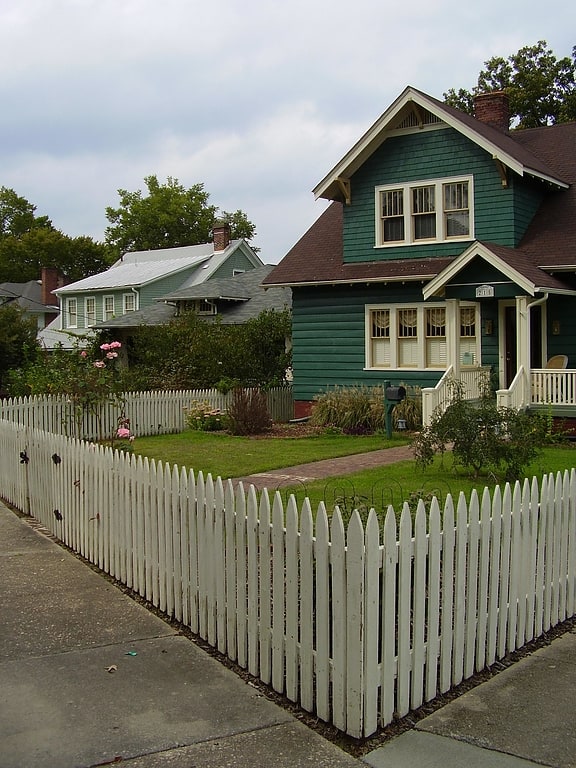
Fisher Park Historic District is a national historic district in the Fisher Park neighborhood, Greensboro, Guilford County, North Carolina. The district encompasses 541 contributing buildings, 2 contributing sites, and 44 contributing structures in a predominantly residential section of Greensboro. The houses were largely built between the 1900s and 1930s and include notable examples of Queen Anne, Colonial Revival, Gothic Revival, American Foursquare, and Bungalow / American Craftsman-style architecture. Located in the district are the separately listed Dixon-Leftwich-Murphy House, John Marion Galloway House, Julian Price House, and Latham-Baker House. Other notable buildings include the First Presbyterian Church, Holy Trinity Episcopal Church, Gant-McAlister House, and A.J. Schlosser House.
It was listed on the National Register of Historic Places in 1992, with a boundary increase in 1996.[24]
Hagan Stone Park
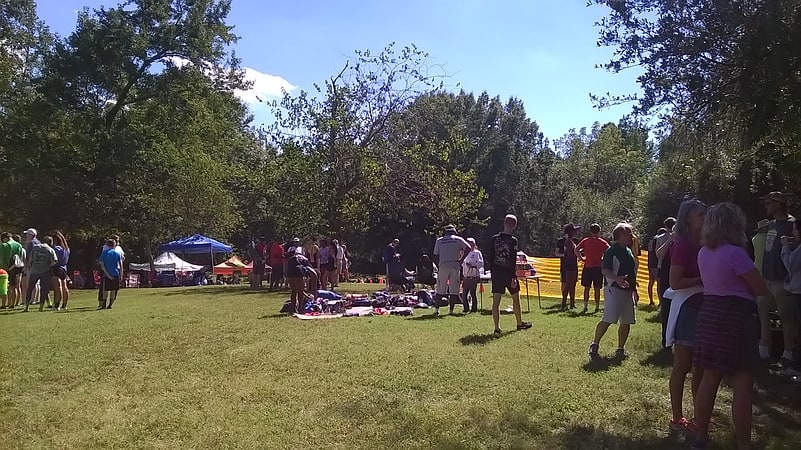
Park in Guilford County, North Carolina. Hagan-Stone Park is a 409-acre wildlife refuge and family campground owned and operated by Guilford County, North Carolina located on Hagan Stone Park Road off U.S. Highway 421. It is open daily 8 am to sunset, weather permitting.
The park has several lakes, camp shelters with charcoal grills, and playgrounds. The park is the home of the Greensboro Invitational Cross Country Meet hosted annually in September by the Greensboro Pacesetters for high school and college athletes.[25]
Address: 5920 Hagan Stone Park Rd, 27313 Pleasant Garden
Sigmund Sternberger House
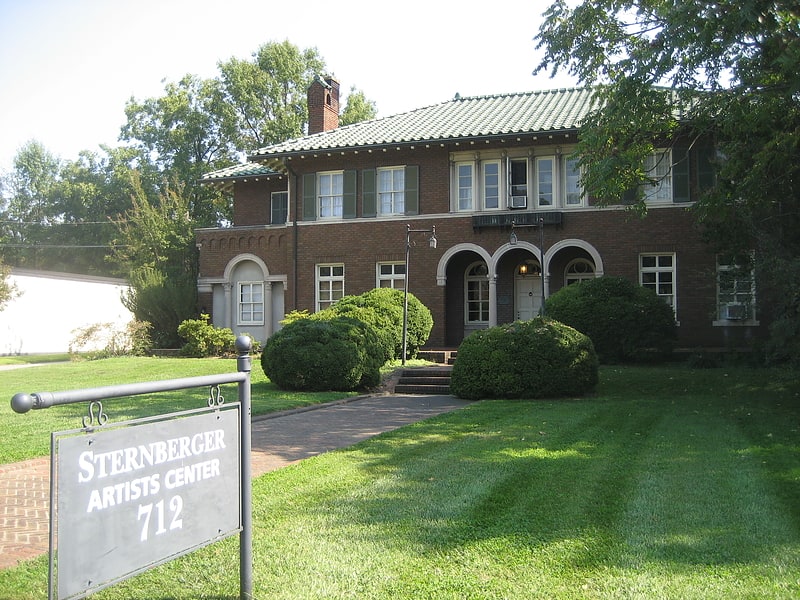
Sigmund Sternberger House is a historic home located at Greensboro, Guilford County, North Carolina. It was designed by architect Harry Barton and built in 1926. It is a two-story villa in the Renaissance Revival style. It is constructed of deep red bricks, green ceramic tiles, and sculpted gray limestone. The house features arcades and Venetian-arched porches. Also on the property are two contributing outbuildings and a contributing brick retaining wall. It has served at the home of the Sternberger Artists' Center since 1964.
It was listed on the National Register of Historic Places in 1993. It is located in the Summit Avenue Historic District.[26]
Hillside
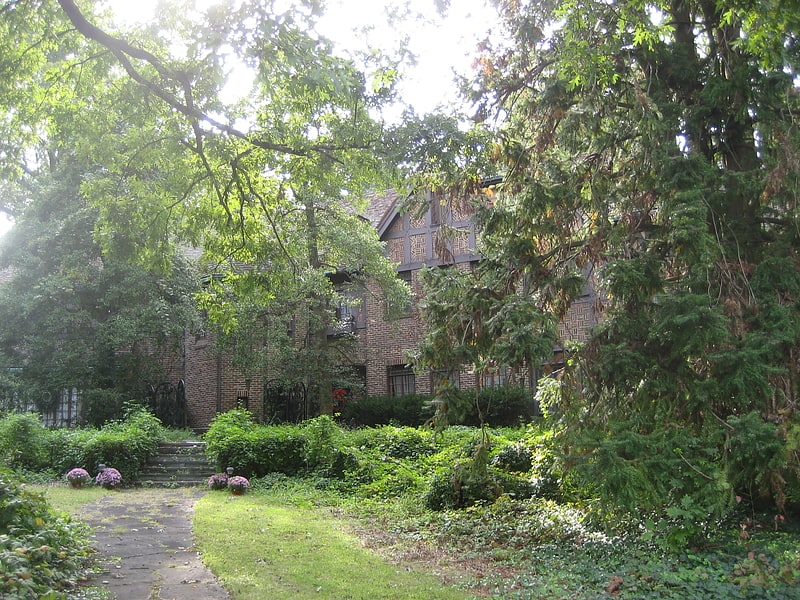
Mansion in Greensboro. Hillside, also known as the Julian Price House, is a historic mansion located in the Fisher Park neighborhood of Greensboro, Guilford County, North Carolina. It was designed by architect Charles C. Hartmann and built in 1929 for the businessman Julian Price. The house, a four-story, 31-room, 180-foot-long dwelling in the Tudor Revival style, sits at 7,266 square feet. It has a three-story polygonal stair tower, red-brown rough fired brick, and half-timbering with tan stucco. Also on the property is a contributing rustic board-and-batten gardener's cottage.
It was listed on the National Register of Historic Places in 1980. It is located in the Fisher Park Historic District.
In January 2017, Sandra Cowart, an interior designer and former owner of the home, was featured on an episode of A&E's Hoarders. Cowart, who lived there since 1975, was an expert on the home and its architecture. She kept the home in pristine condition until her husband left her in 1979, after she refused to sell the home and have it demolished. For many years, she rented out rooms in the mansion, and gave frequent tours. Her family stated that after 2005, she rarely let anyone inside. She became a compulsive collector, and ultimately lost her business, forcing her to partake in several refinancing schemes that ultimately led to the home being foreclosed. The new owners were understanding, and allowed her to sell and dispose of her things. When asked how she felt about being forced to move, Cowart said she is "lucky" to have called Hillside home for 40 years, and hoped the new owners enjoyed it.
Eric and Michael Fuko-Rizzo purchased Hillside in September, 2016, in a foreclosure sale. After the house was cleared of Cowart's possessions in late 2016, the Fuko-Rizzos refurbished the interior and grounds over 2017 with the assistance of Preservation Greensboro, landscape architect Chip Callaway and the University of North Carolina at Greensboro Department of Interior Architecture, among others. After the house was remodeled, the Fuko-Rizzos invited interior designers to turn the house into a gallery of contemporary interior design. The kitchen and most of the house was fully remodeled. The "designer showcase" was open from April 7, 2018, through April 29, after which the Fuko-Rizzo family occupied the house.
The Greensboro Zoning Commission denied the Fuko-Rizzos' request for a special permit in May 2019. On November 14, 2019, a judge reversed the ruling, allowing Hillside to become a bed and breakfast provided certain conditions are met.[27]
Revolution Cotton Mills

Revolution Cotton Mills, also known as Revolution Division and Cone Mills, is a historic cotton mill complex located at Greensboro, Guilford County, North Carolina. The complex was built between 1900 and the mid-20th century and is an example of "slow burning construction." It includes 12 contributing buildings and 2 contributing structures. They include the main mill building, warehouses, weave room and machine shop, bleachery and dye room, storage/shipping/office building, and yellow brick chimney stack. The mill ceased operation in February 1982.
It was listed on the National Register of Historic Places in 1984.
A Winston-Salem company bought the complex for the purpose of converting it into condominiums and a shopping center. Frank Auman and Jim Peeples converted half the space into offices but after they defaulted on a loan, the property went into foreclosure. In September 2012, Self-Help Ventures bid $8 million, and renovation work began in Spring 2013. The section already upgraded had 45 tenants, and the remaining space could have 90 more. In December 2015, the city council approved an incentive grant of $1 million which required Self Help to invest $85 million by 2018. Plans included offices, artist space and 142 apartments.[28]
Address: Textile Dr, 27405 Greensboro
Union Cemetery
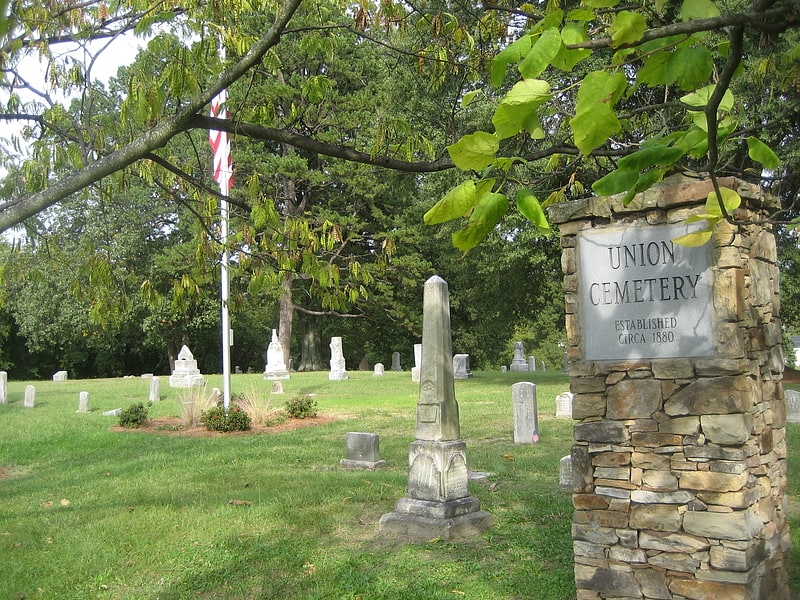
Cemetery in Greensboro, North Carolina. Union Cemetery, also known as South Elm Street Cemetery, is a historic cemetery located at Greensboro, Guilford County, North Carolina. The cemetery for African-Americans was established in 1882. Union retains 97 gravemarkers with death dates from 1882 to 1940. The majority of the markers date between 1901 and 1917, when the city of Greensboro closed the cemetery.
It was listed on the National Register of Historic Places in 1993.[29]
Greensboro Masonic Temple
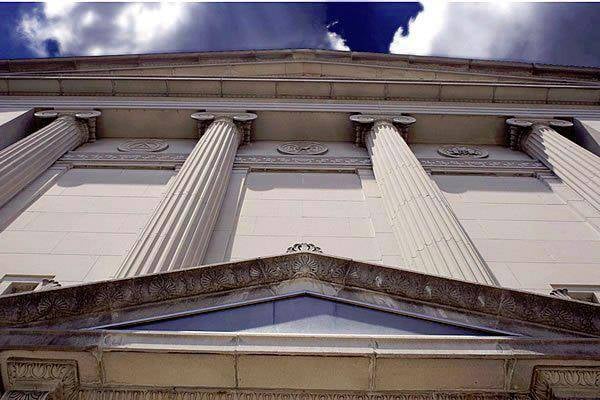
Temple
Address: 426 W Market St, Greensboro
Lake Brandt Church
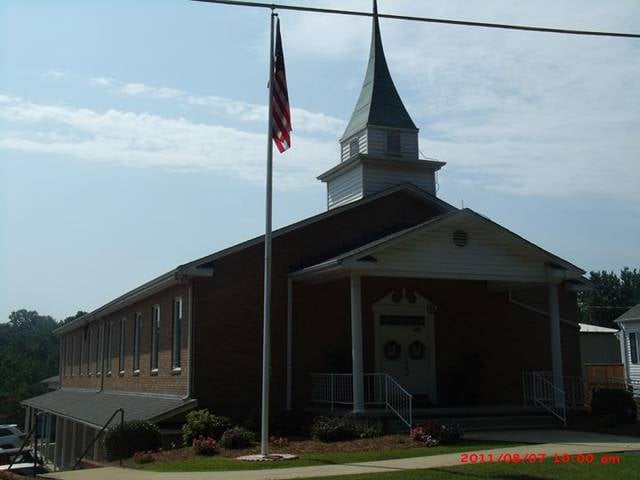
Church
Stagville
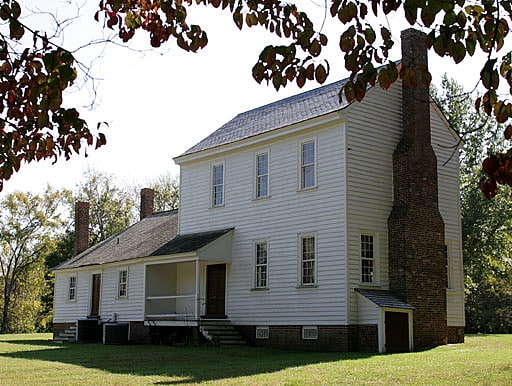
Building in Durham County, North Carolina. Stagville Plantation is located in Durham County, North Carolina. With buildings constructed from the late 18th century to the mid-19th century, Stagville was part of one of the largest plantation complexes in the American South. The entire complex was owned by the Bennehan, Mantack and Cameron families; it comprised roughly 30,000 acres and was home to almost 900 enslaved African Americans in 1860.
The remains of Historic Stagville consist of 71 acres (290,000 m2), in three tracts, and provide a unique look at North Carolina's history and general infrastructure in the antebellum South. Among structures on the Stagville site are several historic houses and barns, including the original Bennehan House and some of the original slave quarters, which were in an area known as Horton Grove.
The Bennehan House, built 1787 with a large addition in 1799, was listed on the National Register of Historic Places in 1973; Horton Grove, an area of two-story slave residences built in 1850, was listed in 1978. The slave residences are well preserved and are the only two-story slave quarters remaining in North Carolina. Significant archaeological finds around the quarters have given archaeologists and historians a glimpse into the lives of the many enslaved people who lived and worked at Stagville and throughout the Bennehan-Cameron holdings.
In 1976, Liggett and Meyers Tobacco Company, which had owned and worked the land for decades, donated some of the acreage to the state of North Carolina, which now operates the property as Historic Stagville State Historic Site, a historic house museum, which belongs to the North Carolina Department of Natural and Cultural Resources.[30]